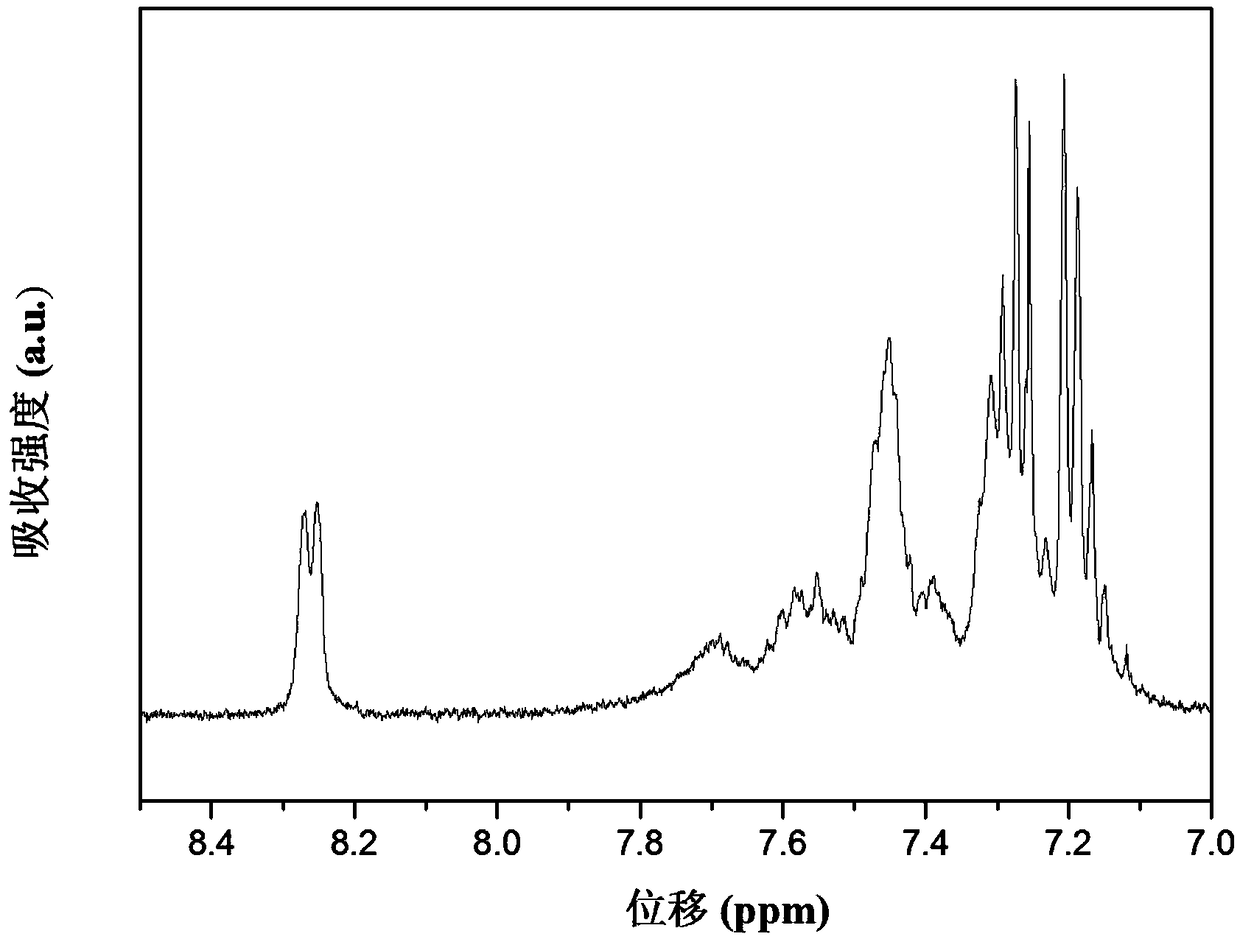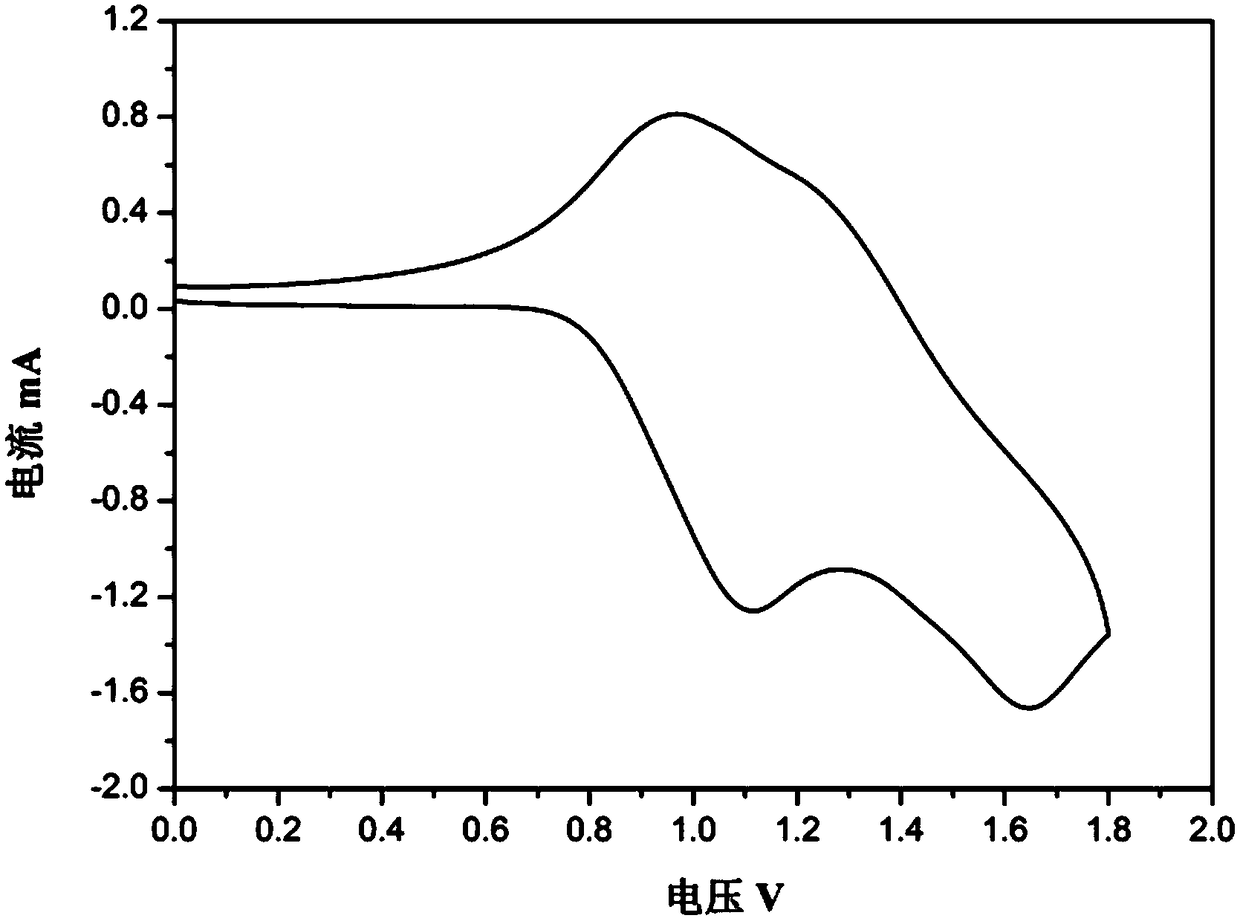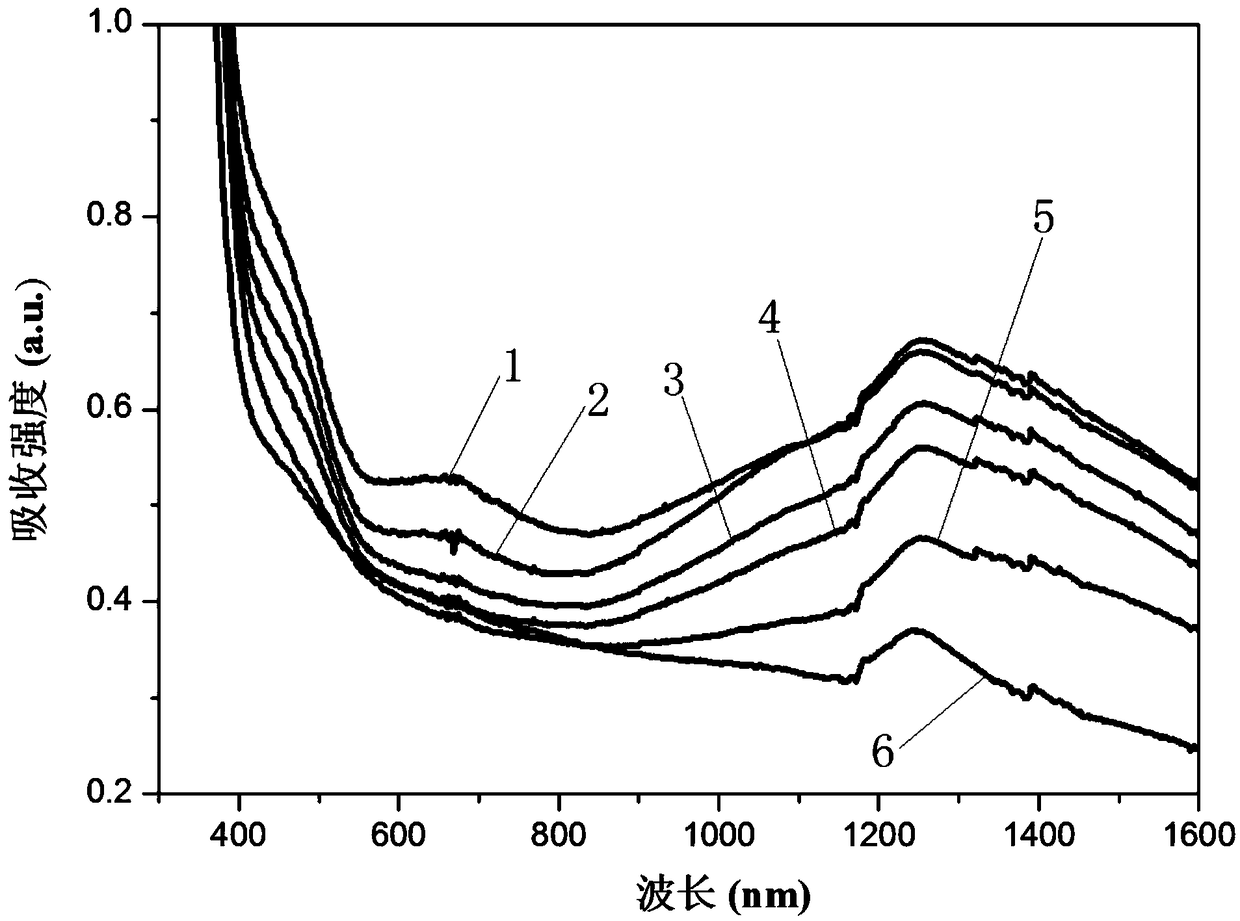Carbazolyl-containing isoindigo polymer and its preparation method and application in electrochromism
An electrochromic layer and electrochromic device technology are applied to carbazole group-containing isoindigo polymers and their preparation and application in electrochromism, and can solve the problem of narrow application range of isoindigo and low solubility of isoindigo And other issues
- Summary
- Abstract
- Description
- Claims
- Application Information
AI Technical Summary
Problems solved by technology
Method used
Image
Examples
specific Embodiment approach 1
[0086] Embodiment 1: The structural formula of the carbazolyl-containing isoindigo polymer in this embodiment is:
[0087] where n is a positive integer.
[0088] This embodiment has the following beneficial effects:
[0089] The isoindigo conjugated polymer containing carbazole groups and isoindigo groups in this embodiment increases the solubility of isoindigo due to the introduction of a long alkyl chain, and is easily soluble in polar solvents. Every 10 ml of polar solution 1~1.5g soluble in medium; slightly soluble in non-polar solvent, 0.1~0.2g per 10ml polar solution;
[0090] 2. The polymer of this embodiment has excellent electrochromic properties and memory properties, and can be applied in the field of electrochromism, and it also has good performance in explosive detection and photoelectric detection;
[0091] Electrochromism refers to the phenomenon of color change caused by electrochemical redox reaction of substances under the driving of external voltage or ...
specific Embodiment approach 2
[0094] Specific embodiment 2: The preparation method of the carbazole group-containing isoindigo polymer of the present embodiment is carried out according to the following steps:
[0095]1. Synthesis of N-(4-(9H-carbazol-9-yl)phenyl)-4-bromo-N-(4-bromophenyl)aniline monomer:
[0096] ①, in N 2 Under the atmosphere, place carbazole monomer, sodium hydride and anhydrous N,N-dimethylformamide in a three-necked flask, add p-fluoronitrobenzene at a rate of 1 to 2 drops per second while stirring, and heat up to After 114~115 ℃, carry out isothermal reaction, use thin layer chromatography to judge whether the isothermal reaction is over, and cool down after the isothermal reaction is over; place the reaction product in cold water until the crude product is precipitated, then filter out the crude product, and wash the crude product with hot water 2 to 3 times, use ethanol to recrystallize the crude product washed with hot water, filter out the crystalline product after recrystalliza...
specific Embodiment approach 3
[0149] Embodiment 3: The difference between this embodiment and Embodiment 2 is that the eluent used in the separation of solid products by the chromatographic column described in step 2 (2) is a mixture of dichloromethane and petroleum ether, and dichloromethane and The volume ratio of petroleum ether is 1:(7~8). Other steps and parameters are the same as in the second embodiment.
PUM
 Login to View More
Login to View More Abstract
Description
Claims
Application Information
 Login to View More
Login to View More - R&D
- Intellectual Property
- Life Sciences
- Materials
- Tech Scout
- Unparalleled Data Quality
- Higher Quality Content
- 60% Fewer Hallucinations
Browse by: Latest US Patents, China's latest patents, Technical Efficacy Thesaurus, Application Domain, Technology Topic, Popular Technical Reports.
© 2025 PatSnap. All rights reserved.Legal|Privacy policy|Modern Slavery Act Transparency Statement|Sitemap|About US| Contact US: help@patsnap.com



